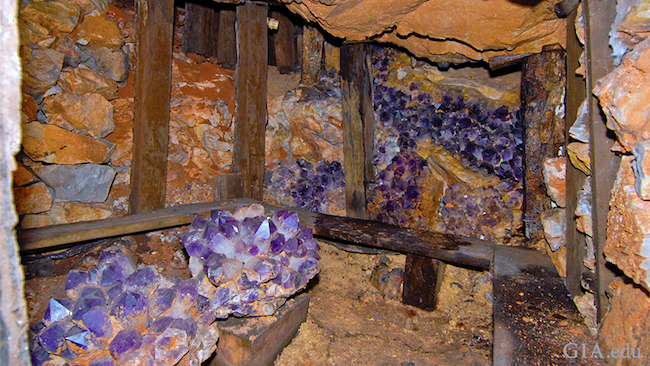The History of Amethyst
It is no surprise that many people love, and constantly seek, the renown and beauty of lovely, crystal clear diamonds. Diamonds have long been the apple of society's eye. However, often in people's lust for diamonds, they overlook the beauty and value of other gemstones.
Sometimes people can believe they are not as good because they are less expensive, or because they are not, well, diamonds. That's why we decided to do a little research on amethysts and discuss them a bit. Here is a brief look into the amethyst history and lore.
TABLE OF CONTENTS
The Discovery of Amethyst
To begin our peek into amethyst gemstone history, we'll talk about the discovery of the lovely stones. This actually ties in a little with its history and lore (which we will discuss in a bit).
The Ancient Greeks believed that their god, Dionysus, was the very first being to ever stumble upon the purple gemstone. Exactly how long this gem has existed is unclear, but it was first discovered in France, about 25,000 years ago. That means it was first used by prehistoric people!
Today, it can be found in many places all over the world. The biggest portion of the amethysts that hit the market comes largely from Brazil and Uruguay; specifically, Minas Gerais, Artigas, and the Rio Grande do Sul.

Natural versus Lab-Created Amethyst
Truthfully, the biggest difference between natural amethyst stones and the lab-created ones is where they are formed. They have the same chemical make-up, and possess the exact same physical characteristics. Since scientists are aware of amethysts' chemical composition and their natural formation process, that can be replicated in labs. Moreover, natural amethyst grows in geodes (as shown below). Learn more about Amethyst Formation.
Significance Throughout History
As with all gemstones, the amethyst or purple quartz, has its own unique significance and meanings. And, as with all other stones, it has more than one single meaning. Did you know, for example, people once believed that, because of its name (which basically means “not intoxicate”), it could prevent alcohol intoxication? In the past, many people would wear or carry an amethyst when attending parties or celebrations to prevent themselves from getting drunk. Additionally, purple quartz was also associated with higher-ranking nobility.
What Amethyst Means Today
Today, amethyst is a highly popular stone used in meditations and to heighten spiritual consciousness. It is also associated with peace and healing, courage and bravery. Moreover, it is believed to have properties to speed up and increase the chances of successful recovery from many things. Lastly, it also happens to be the birthstone of those born in February!
FAQs
Where was Amethyst first discovered?
Where is Amethyst found and mined?
Is there a difference between natural and lab-created Amethyst?
Are there any legends about Amethyst?
Is Amethyst a birthstone?









